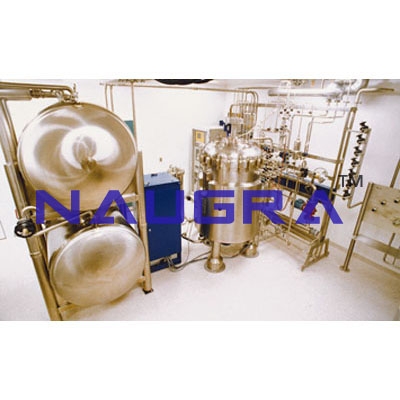- Civil Lab Mechanical Lab Engineering Lab Equipments
- sales@didacticlabequipments.com

CAT NO: DIDACTICNLE-Export-210068
Biotechnical Production of Alcohol- Engineering Lab Training Systems.
echnical Description
As well as its great importance for
the chemical and foodstuffs industries, ethanol (alcohol) is
increasingly used as a fuel. The Biotechnical Production of Alcohol can
be used to conduct realistic experiments for the production of ethanol
from starch-based raw materials such as potatoes. The system consists of
three main components: a mash tank, a fermentation tank and a
distillation unit.
A mixture of water, mechanically macerated
potatoes and alpha-amylase (enzyme) is poured into the mash tank. To
dissolve the tightly packed starch chains in the potatoes, heating steam
is injected into the mixture via a nozzle (gelatinisation). This
increases the flow resistance of the mash, which would prevent further
processes. The alpha-amylase breaks up the starch chains (liquefying)
thereby reducing the flow resistance. Gluco-amylase is used to convert
the starch into sugar (saccharification). This enzyme requires lower
temperatures and pH values. The temperature is reduced using the water
cooling jacket around the mash tank, the pH value is reduced by the
addition of acid. After saccharification the mash is pumped into the
fermentation tank. During the fermentation process in this tank, ethanol
is produced. A water cooling system controls the temperature. After the
fermentation process, the mash is pumped into the distillation unit.
This is equipped with a bubble tray column for separation of the
ethanol. Two vessels are available, one for the spent mash, the other for the distilled ethanol.
The system has comprehensive measurement, control and operating
functions, which are controlled via a PLC. A touch screen displays
measured values and permits the operation of the system.
